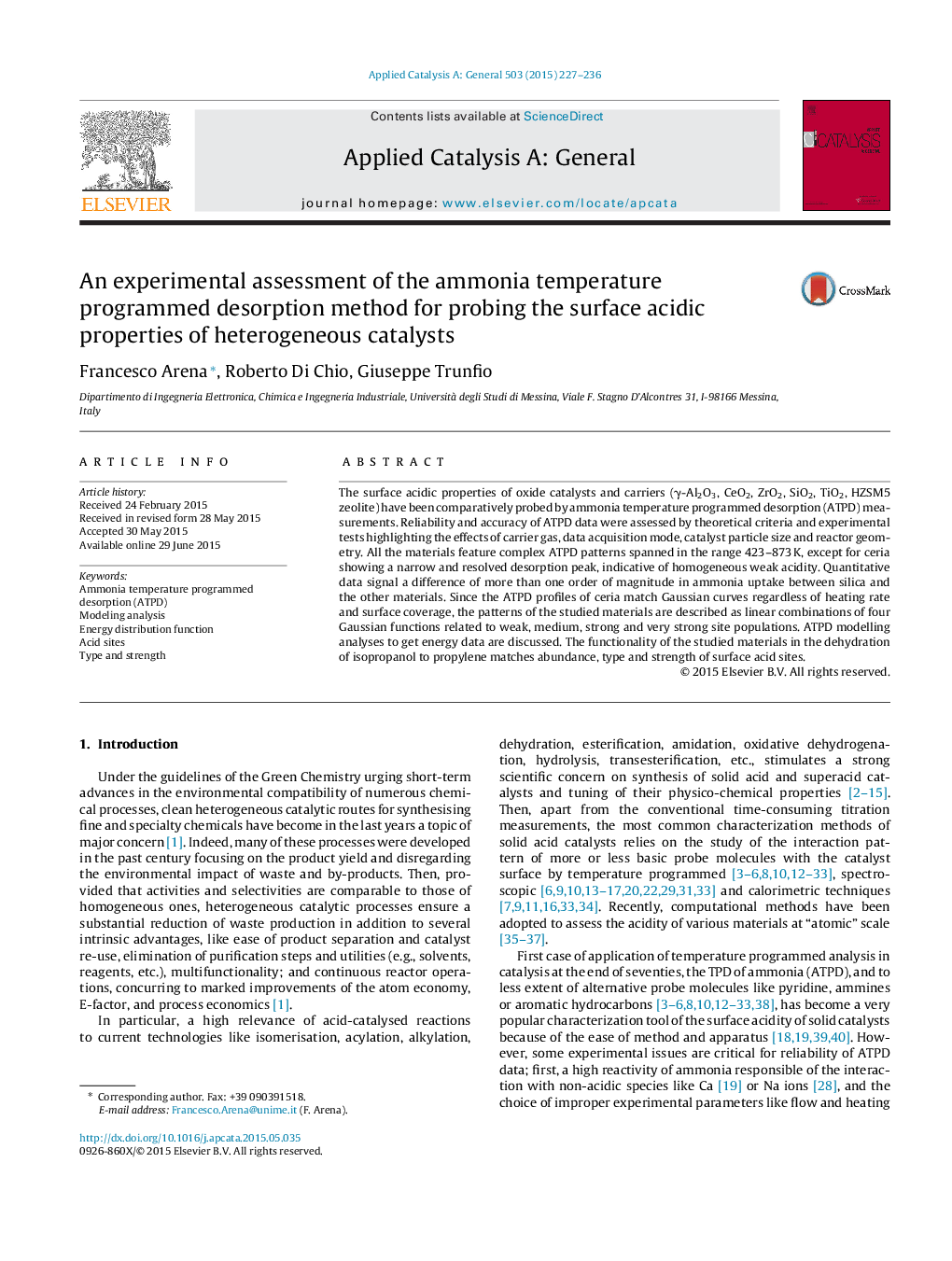| Article ID | Journal | Published Year | Pages | File Type |
|---|---|---|---|---|
| 39265 | Applied Catalysis A: General | 2015 | 10 Pages |
•TPD (ATPD) measurements is assessed.•The surface acidic properties of various catalytic materials have been addressed.•All ATPD patterns are described as linear combinations of 4 Gaussian curves.•Energy distribution functions provide consistent data for weak, medium, strong and very strong site populations.•ATPD data match the catalytic functionality in the dehydration of isopropanol to propylene
The surface acidic properties of oxide catalysts and carriers (γ-Al2O3, CeO2, ZrO2, SiO2, TiO2, HZSM5 zeolite) have been comparatively probed by ammonia temperature programmed desorption (ATPD) measurements. Reliability and accuracy of ATPD data were assessed by theoretical criteria and experimental tests highlighting the effects of carrier gas, data acquisition mode, catalyst particle size and reactor geometry. All the materials feature complex ATPD patterns spanned in the range 423–873 K, except for ceria showing a narrow and resolved desorption peak, indicative of homogeneous weak acidity. Quantitative data signal a difference of more than one order of magnitude in ammonia uptake between silica and the other materials. Since the ATPD profiles of ceria match Gaussian curves regardless of heating rate and surface coverage, the patterns of the studied materials are described as linear combinations of four Gaussian functions related to weak, medium, strong and very strong site populations. ATPD modelling analyses to get energy data are discussed. The functionality of the studied materials in the dehydration of isopropanol to propylene matches abundance, type and strength of surface acid sites.
Graphical abstractFigure optionsDownload full-size imageDownload high-quality image (205 K)Download as PowerPoint slide
